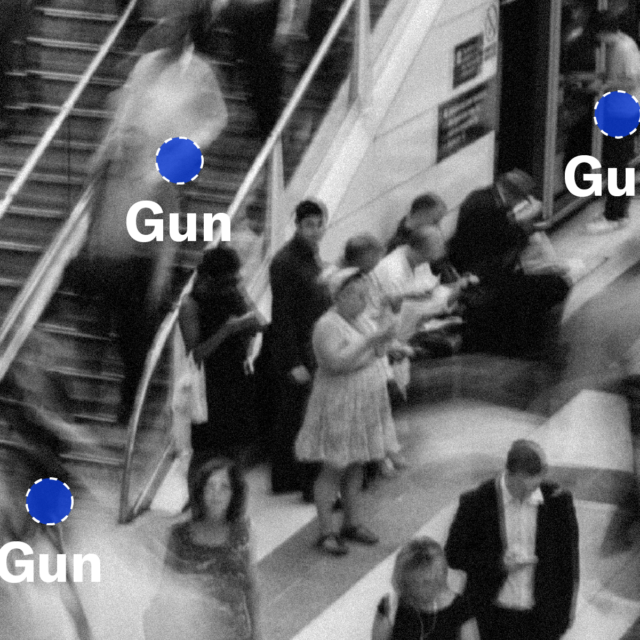City Dashboard: Gun Homicide
Last Updated: 8.20.2025
Summary
Across the United States, gun homicides dropped by a record-setting -16.7 percent in 2024.1Everytown Research analysis of Federal Bureau of Investigation, “Expanded Homicide Data, Table 8: Murder Victims by Weapon, 2020–2024,” Crime Data Explorer, https://cde.ucr.cjis.gov/LATEST/webapp/#. By comparison, the number of gun homicide victims dropped 11.3 percent from 1995 to 1996. Everytown Research analysis of FBI SHR data, 1985–2024, accessed August 2025. https://ucr.fbi.gov/crime-in-the-u.s/. In effect, 2,352 fewer lives were taken by gun homicides in 2024, compared to 2023. Aggravated assaults involving guns, robberies involving guns, and overall violent crime fell along with it (-8.6 percent, -18.3 percent, and -4.5 percent, respectively).2Federal Bureau of Investigation, “UCR Summary of Reported Crimes in the Nation, 2024,” August 2025, https://cde.ucr.cjis.gov/LATEST/webapp/#/pages/explorer/crime/special-reports.
While this progress is worth celebrating, every life taken or forever changed due to gun violence is an avoidable tragedy. Factors like systemic racism, social determinants of health, and state-level gun safety policies contributed to some communities reaping these benefits more than others. In 2024, Black people in US cities died by gun homicides at a rate 5.5 times higher than white people.3 Everytown Research analysis of FBI NIBRS data, 2024, accessed August 2025. In FBI-reporting cities with populations of at least 65,000, Black people in the US died by gun homicides at a rate of 23.6 per 100,000 people, and white people died by gun homicides at a rate of 4.3 per 100,000 people in 2024.
The FBI is the leading source of city gun violence data, covering over 95 percent of the US population in 2024.4Federal Bureau of Investigation, “UCR Summary of Reported Crimes in the Nation, 2024,” August 2025, https://cde.ucr.cjis.gov/LATEST/webapp/#/pages/explorer/crime/special-reports. Everytown’s City Gun Homicide dashboard allows users to explore gun homicide trends in nearly 600 cities with populations of 65,000+ that reported data to the FBI from 2020 to 2024.



